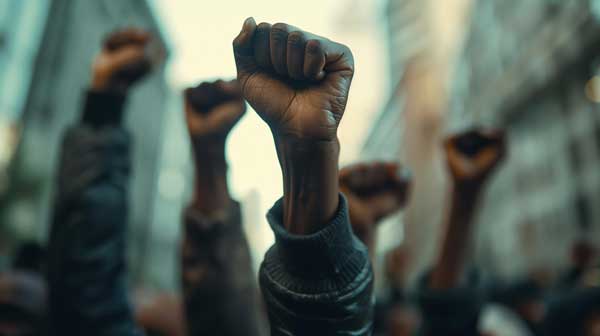Mass Manila protests demand answers over alleged ₱1 trillion flood-control graft

[Hands, Humans, Fist image, Photo Credit to Pixabay]
Tens of thousands of Filipinos marched across Manila on the 21st of September, accusing the government of misusing up to ₱1 trillion (about $17.6 billion) in flood-control funds, as revealed following President Ferdinand Marcos Jr.’s July address.
Demonstrations converged on historic sites including Rizal Park and EDSA, while Senate and independent investigations into the scandal continued; isolated clashes with police were also reported.
The protests represent one of the most significant challenges to Mr. Marcos since his election in 2022.
The scandal erupted when the president acknowledged that flood-control projects previously declared complete were riddled with irregularities and inconsistencies.
Environmental organizations later estimated that vast sums allocated for flood protection had been diverted, leaving communities vulnerable to increasingly frequent floods.
Mr. Marcos has established an independent commission to investigate, while the Senate’s Blue Ribbon Committee is conducting its own inquiry.
Both the Senate president and the House speaker have already resigned, underscoring the political fallout.
Despite his position, the president has attempted to identify with public anger, stating last week, “Of course they are angry. I am angry. We should all be angry.”
The protests began before dawn with a 10-kilometer solidarity run through Manila.
Participants said they were directly affected by unsafe infrastructure and poorly maintained public spaces.
“It is important for us to speak out against corruption because as runners we are impacted by damaged roads, unlighted streets, poorly planned spaces,” said protester Nica Dumlao.
Religious leaders also joined the demonstrations.
At an early morning Mass, Father Julio Ramon Mallonga read a statement from the Catholic Bishops’ Conference of the Philippines calling the scandal “a big scandal because most people here are starving while those sitting in government are depleting the people’s money.”
Although organized as peaceful demonstrations, the rallies witnessed outbreaks of violence. Groups of young men hurled stones and burned trailers while clashing with riot police. Authorities confirmed arrests but did not immediately release numbers.
Many participants directed their anger toward so-called “nepo babies” linked to the scandal.
Placards mocked the children of contractors and officials alleged to have benefited from fraudulent contracts, with one sign declaring, “Their luxury, our misery.”
On social media, critics circulated images of luxury goods and lavish lifestyles associated with the families of officials under scrutiny.
Veteran activists from the 1980s anti-dictatorship struggle marched alongside younger protesters.
Marivic Sison and Melanie Lago, both 68, said they were frustrated to see familiar patterns of corruption resurface.
“We are sick and tired,” Ms. Lago said. Ms. Sison added, “We have not lost faith in our country, and we just have to bring out what we feel.”
The timing of the rallies carried deep symbolism, coinciding with the 53rd anniversary of Ferdinand Marcos Sr.’s declaration of martial law.
The marches along EDSA evoked memories of the 1986 “People Power” movement that toppled the dictator.
For many, the protest embodied both outrage and renewed hope.
While critics fear that past scandals have ended without accountability, organizers said the unprecedented scale of Sunday’s demonstrations signaled a new generation’s determination to confront corruption.
The chants and placards echoing through Manila signaled not only anger over missing flood funds but also a renewed call for accountability in a nation still grappling with the legacies of corruption and climate vulnerability.

- Sieun Park / Grade 12
- International School Manila

![THE HERALD STUDENT REPORTERS [US]](/assets/images/logo_student_us.png)
![THE HERALD STUDENT REPORTERS [Canada]](/assets/images/logo_student_ca.png)
